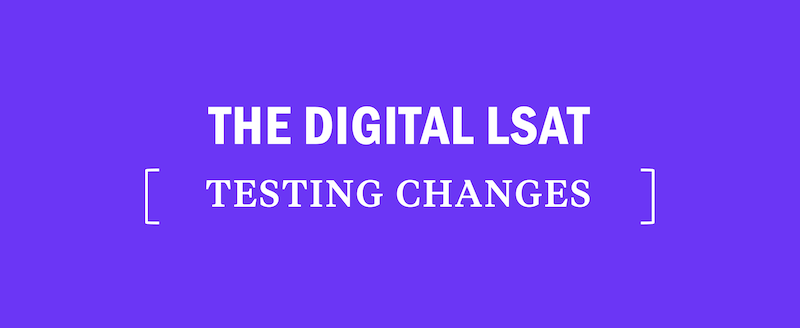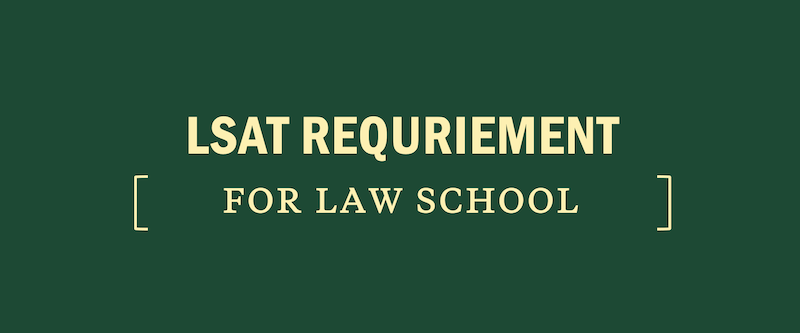Top Tips for Logic Games on the Digital LSAT
LSAT Logic Games are often the most-feared question type on the exam. Already, the LSAT is unlike any test you’ll have taken in your undergraduate career, and Logic Games, or Analytical Reasoning, challenges your formal logic skills, as well as your ability to make deductions, eliminate assumptions, and more. Even so, there is a whole lot of silver lining to Logic Games. With strategy and practice, many test-takers learn to love Logic Games—yes, really—and see big score gains on this intimidating section. Still not into it? Logic Games make up the fewest number of questions on the LSAT. Since all LSAT questions are “worth” the same, doing well in Logical Reasoning and Reading Comprehension can offset some Logic Games struggles.
[ RELATED: Guide to LSAT Logic Games ]
As you get familiar with the LSAT’s digital interface, you’ll want to take note of two features that distinguish the Logic Games screen from the Logical Reasoning screen. First, the left-hand column now has the game’s setup and rules. That remains the same for all of the questions associated with a game. Any highlighting or underlining you do in the setup and rules (i.e., the left-hand column) will persist even when you move to another question.
Second, there are vertical lines in the bubble bar to indicate the beginning and end of each of the section’s four games. You’ll use that to your advantage in the very first strategy associated with this section.
LSAT Logic Games Tip #1: Triage the games before diving in
Too often, test takers simply tackle the games in the order that the test serves them up. Even on the paper-and-pencil LSAT, many experts suggested flipping through the four games in the section to assess their relative difficulty. With the ease of clicking through the games on the bubble bar, this initial section triage is even easier. As you prep and practice for the LSAT, you’ll invariably find that you have a “favorite” type of Logic Game that you become adept at solving quickly. If you spot a game type you excel at, get it out of the way first. You’ll boost your confidence and leave yourself time to focus on tougher games.
LSAT Logic Games Tip #2: Set up your scratch paper
For almost every test taker, the Logic Games section will require more handwritten diagrams and notes than any other section on the LSAT. One nice thing about the paper test booklet was that you could keep your sketches right below the setup and rules and right next to each question.
We suggest that you develop an equally clear system for keeping track of your handwritten work in the pages of your scratch paper booklet. As soon as you see that your section is Logic Games, label four pages (or, if you have big handwriting, four sets of 2-page spreads) with “G1,” “G2,” etc. to keep track of your notes for each game. Then, for each game’s page, preserve an area for your depiction of the overall setup and rules, and label a spot for each question. Keeping your work clear and distinct will prevent confusion later on. This will also make room should you need to redraw your setup with alternate rules without disturbing your master sketch. Whatever method feels the most comfortable for you, practice it until it’s second nature so you’re not fumbling around with your scratch paper booklet on test day or wasting precious minutes figuring out a system on the fly.
[ READ: Ultimate Guide to LSAT Test Day ]
LSAT Logic Games Tip #3: Jot down the correct answer to the Acceptability question
Well-trained test takers know that, for almost every logic game, the first question will ask for an acceptable arrangement of the game’s entities. Using Kaplan’s elimination strategy for Acceptability questions, they turn these into quick points. Beyond that, however, true LSAT experts use the correct answer to the Acceptability question (which represents an arrangement that does not violate any of the game’s rules) to eliminate incorrect answers in other questions associated with the game. In the paper booklet, a test taker could see all of the questions associated with a given game without turning a page. On the digital test, however, you need to click back to see the answer to an earlier question.
We recommend that you simply write down the correct answer to any Acceptability question on your scratch paper, so you could use it to evaluate other questions without having to click back and forth. Just like setting up your booklet, you’ll want to practice doing this so the Acceptability answer is visible and conspicuous and in the same spot every time.
When you’re practicing, don’t hesitate to use paper-and-pencil LSAC PrepTests to get ready for the digital test. The content will be 100% applicable. As you use those tests, however, train yourself to start using scratch paper for your sketches and diagrams. Again, you don’t want test day to be your first time managing the test interface and a separate scratch paper booklet.
Kaplan-trained LSAT test takers get very fast and accurate at characterizing the one correct and four incorrect answers for any Logic Games question. Remember that only one answer choice is correct which means the other four choices must be false, i.e. they’re never “kind of true”.
Consider, for example, a question in which the correct answer must be false. In that case, all four wrong answers could be true. On the paper test, some experts would jot down something along the lines of “1 MBF / 4 CBT” next to the question stem in the booklet to help them evaluate the answer choices more quickly and confidently. Those same experts were more likely to use the highlighting feature of the digital LSAT to highlight the characteristics of the correct answer when working in the digital environment. Try it out to see if this is helpful for you.
Looking for more digital LSAT strategies? Check out our tips for Reading Comprehension and Logical Reasoning.
[ ALSO READ: Ultimate Guide to 2019 LSAT Test Changes + Top 4 Tips and Strategies for the Digital LSAT ]





